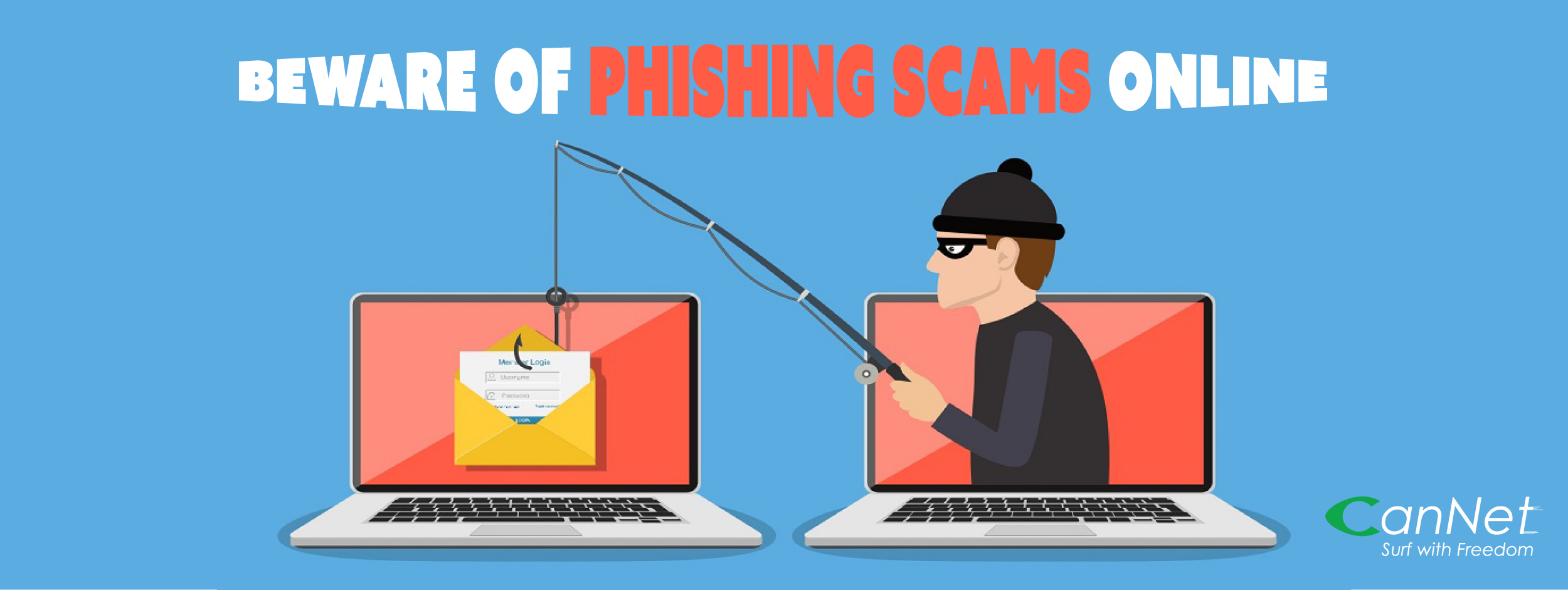How to Recognize and Avoid Phishing Scams
Did you know that when you are on the internet, it’s always phishing season? You won’t be catching any fish, but you will be having shiny toys dangled in front of you to try to bait and lure you in. Believe it or not, there are people on the Internet always ready to take advantage of you.
Phishing scams will masquerade themselves as being from safe and trusted sources, with gifts or chances at prizes for completing a survey or clicking through a link. These crafty crooks can, for example, use a few clever tricks and your IP address to create a survey form which, at first glance, seems that it’s from CanNet or any other company such as Apple/Amazon, or Costco.
How TO Recognize Phishing?
Scammers use email or text messages to trick you into giving them your personal information. They may try to steal your passwords, account numbers, or SIN numbers. If they get that information, they could gain access to your email, bank, or other accounts. Scammers launch thousands of phishing attacks like these every day and they’re often successful.
Phishing emails and text messages may look like they’re from a company you know or trust. They may look like they’re from a bank, a credit card company, a social networking site, an online payment website or app, or an online store. Phishing emails and text messages often tell a story to trick you into clicking on a link or opening an attachment.
How to Protect Yourself from Phishing Attacks?
- Protect your computer by using security software. Set the software to update automatically so it can deal with any new security threats.
- Protect your mobile phone by setting software to update automatically. These updates could give you critical protection against security threats.
- Protect your accounts by using multi-factor authentication. Some accounts offer extra security by requiring two or more credentials to log in to your account. This is called multi-factor authentication. The additional credentials you need to log in to your account fall into two categories:
- Something you have — like a passcode you get via text message or an authentication app.
- Something you are — like a scan of your fingerprint, your retina, or your face.
- Protect your data by backing it up. Back up your data and make sure those backups aren’t connected to your home network. You can copy your computer files to an external hard drive or cloud storage. Back up the data on your phone, too.
- If you encounter suspicious emails with funny links asking you to log-in or for your log-in information delete these emails and DO not click or open any links.
CanNet takes security seriously and investigates scams that mislead our customers as we become aware of them. We hope that you will take information security seriously, too. Keep your anti-virus software up-to-date, be vigilant with safe surfing practices, and read the fine print when it comes to any online offer that seems too good to be true.

